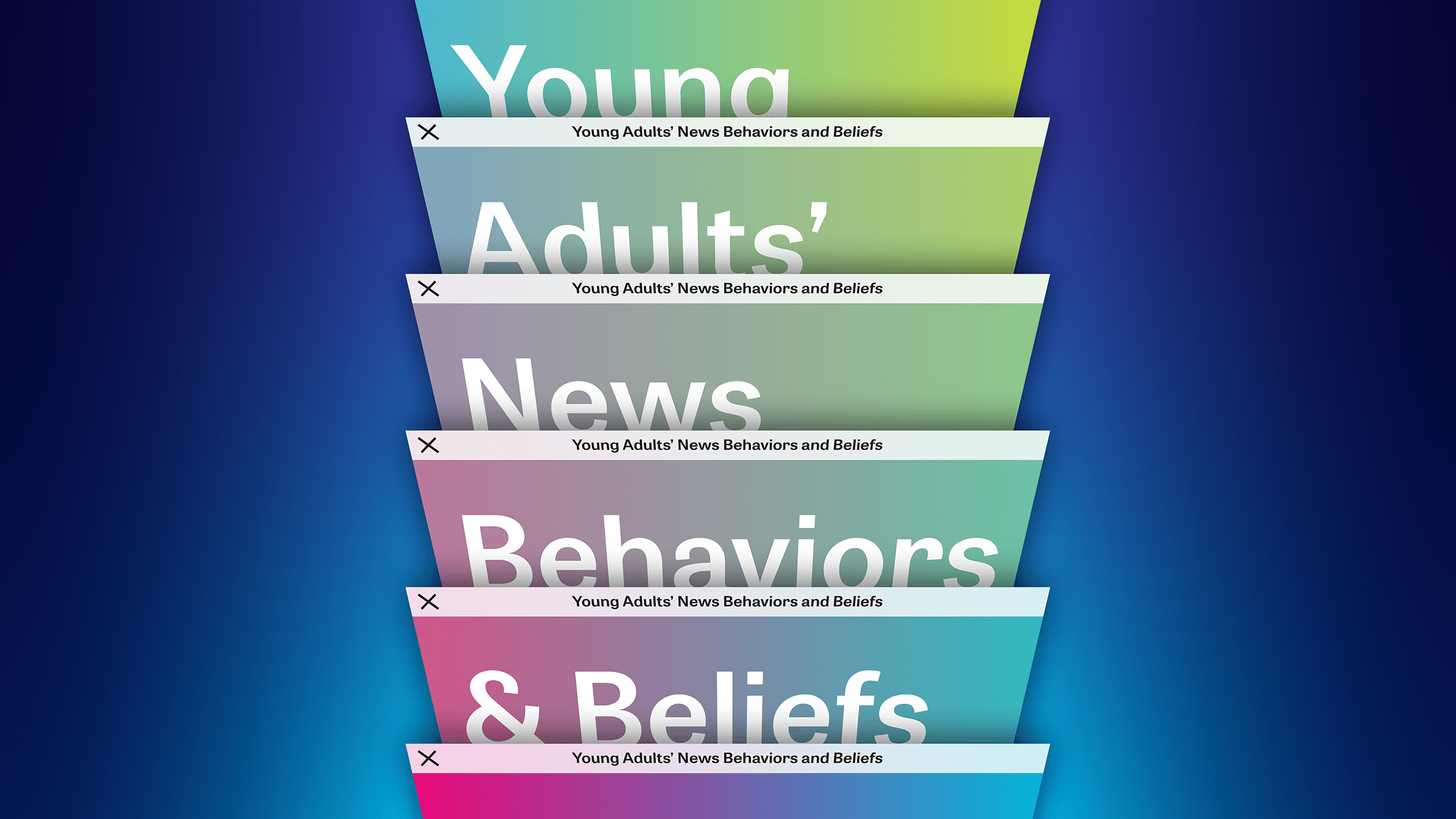Learn more about the report’s key findings in this article on Knight Foundation’s Trust, Media and Democracy Medium publication.
Dispelling the notion that young adults don’t pay attention to news, a new survey shows 88 percent of people ages 18-34 access news at least weekly, including 53 percent who do so every day. Hispanic and black young adults are more likely to share news with friends on social media.
Young adults of all races are highly digital news consumers, finding their news on social media, smartphone alerts or news websites. The most popular reasons young adults share news are because they find it interesting, helpful, or entertaining. However, highly partisan young adults are more likely than their peers to share news that confirms with others’ opinions.
Young adults often do not believe that their race or ethnicity is covered regularly in the media, even in their favorite news sources. In addition, a sizeable portion of young adults, especially many Hispanics and African Americans, say they see inaccuracies and irregularities in the coverage of their racial or ethnic communities.
The findings come from a recent Knight Foundation survey conducted by NORC at the University of Chicago. The nationally representative survey of 1,660 adults age 18–34 includes oversamples of African Americans and Hispanics in order to explore news behavior and beliefs of young adults within and across races and ethnicities. In addition, the study measures the impact of personal identities and psychological predispositions on young adults’ perceptions of news and news behaviors.
Many young adults have concerns about the ideological and political leanings of news sources, according to the survey. A majority believes certain news sources have ideological positions, divide society, and hurt democracy.
When asked about their most liked and least liked news sources, young adults believe news sources—even their favorite ones—have a liberal or conservative slant. Democrats are more likely to perceive an ideological slant to their news sources. Fifty-seven percent of Democrats see their favorite news source as liberal, while 36 percent of Republicans perceive their favorite source as conservative. More Democrats say their least liked source is very conservative than Republicans say their least liked source is very liberal (75 percent vs. 68 percent).
And young adults are more likely to say their least liked source divides the country than they are to say their favorite news source unites the country, even though most people rarely interact with their least liked source.
Young adults are more likely to have strong negative views of their least liked source than positive views of their favorite source. About 45 percent say their favorite source is neither liberal nor conservative, while 75 percent say their least liked source is liberal or conservative.
The findings also illustrate that ethnic news media is a key source for young Hispanic and African Americans, particularly those who have strong beliefs about race and personal experience with discrimination. Young African Americans and Hispanics who say they regularly experience racial discrimination are more likely to seek out racial or ethnic media sources that explore issues from their perspective.
A majority of young adults use their favorite news source at least a moderate amount to decide what candidates to vote for and what policies to support, and young African Americans are especially likely to act on information from the media.
Young adults with strong partisan and racial identities are more likely to rely on news to make decisions. Strong political partisans are also more likely to rely on news sources to decide which policies or candidates to support.
The four pieces of this report follow:
- What Information People Share and Why
- News Sources and Bias
- Concerns About Reporting on Race and Ethnicity
- How Young Adults Use the News
- Young Adults’ News Behaviors and Beliefs External Content / Website
